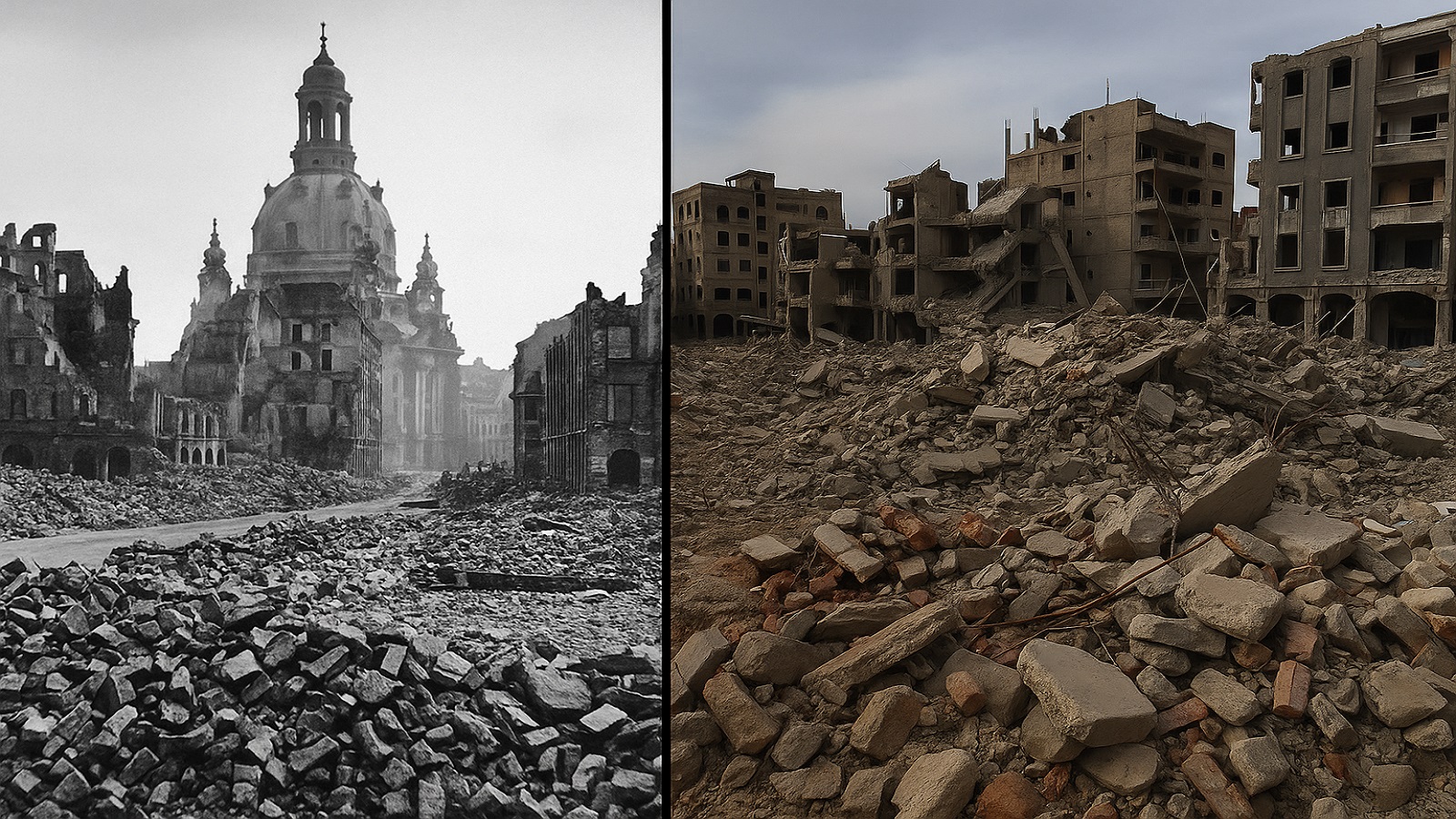Bombing Civilians Without a Clear Strategy
Al-Ittihad, UAE, August 15
On August 8, while commenting on the deaths of civilians in Gaza caused by Israeli airstrikes, US Ambassador to Israel Mike Huckabee sought to justify the attacks by invoking the Allied firebombing of Dresden in February 1945. His remarks, provocative as they are, raise a broader issue worth examining: the long and deeply contested history of aerial bombardment against civilians.
The use of air power against noncombatants dates back to World War I, when German Zeppelins dropped bombs on British cities. Though casualties were relatively limited compared to the slaughter inflicted by artillery on the European front lines, the psychological impact was immense, signaling a new era of warfare.
In the interwar period, air raids were deployed in colonial campaigns across the Middle East and North Africa. In Europe, the most notorious case was the German bombing of Guernica in 1937 during the Spanish Civil War. Though only a few hundred people were killed, the attack targeted a market day and became immortalized through Pablo Picasso’s iconic mural, which conveyed the horror of modern mechanized destruction.
The Sino-Japanese War that erupted that same year marked an even more brutal expansion of this tactic. Japanese forces unleashed devastating air raids on Chinese cities, killing tens of thousands in Chongqing and contributing to mass civilian deaths in Nanjing.
World War II cemented the role of air power in civilian carnage, with estimates of one to one and a half million people killed across multiple fronts. The German bombing of Warsaw in 1939, the flattening of Rotterdam, and the Blitz against Britain in 1940 foreshadowed the sheer scale of devastation yet to come.
Give the gift of hope
We practice what we preach:
accurate, fearless journalism. But we can't do it alone.
- On the ground in Gaza, Syria, Israel, Egypt, Pakistan, and more
- Our program trained more than 100 journalists
- Calling out fake news and reporting real facts
- On the ground in Gaza, Syria, Israel, Egypt, Pakistan, and more
- Our program trained more than 100 journalists
- Calling out fake news and reporting real facts
Join us.
Support The Media Line. Save democracy.


As the war intensified, the Allies responded with massive bombing campaigns across Germany, creating “firestorms” that consumed cities like Hamburg, Kassel, and Dresden, while others—Cologne, Berlin, Hanover, Stuttgart, and Magdeburg—were left in ruins.
In the Pacific theater, American raids on Japan culminated in the March 1945 firebombing of Tokyo, which incinerated more than 100,000 civilians, and later in the atomic annihilation of Hiroshima and Nagasaki.
The use of air power against civilians did not end with World War II. In Southeast Asia during the 1960s and 1970s, hundreds of thousands perished in bombing campaigns, and the region suffered the ecological and human toll of Agent Orange, a chemical weapon aimed at destroying crops and forests.
In later decades, wars in the Middle East and South Asia saw comparatively fewer deaths from airstrikes, yet the protracted bombing campaigns in Gaza have triggered some of the fiercest debates in recent memory. The ubiquity of raw, daily video footage—images of families digging through rubble, children starved and displaced, and entire neighborhoods flattened—has amplified global accusations that Israel is committing war crimes, even genocide.
This moral quandary is not new. At the end of World War II, the destruction of Dresden was criticized by British officials, church leaders, and ordinary citizens alike, though it was not classified as a war crime, largely because the revelation of Nazi atrocities overshadowed such debates.
Likewise, the moral reckoning over Hiroshima and Nagasaki was muted by the widespread belief that the atomic bombs spared millions of lives by forcing Japan’s surrender and avoiding a ground invasion.
Today, Gaza presents its own moral labyrinth. While Hamas bears responsibility for embedding its operations among civilians, Israel faces mounting criticism for what increasingly appears to be a war without a clear exit strategy. The grim lesson of history is that aerial bombardment of civilians invariably raises doubts about both morality and strategy, doubts that reverberate long after the bombs have fallen.
Geoffrey Kemp (translated by Asaf Zilberfarb)

